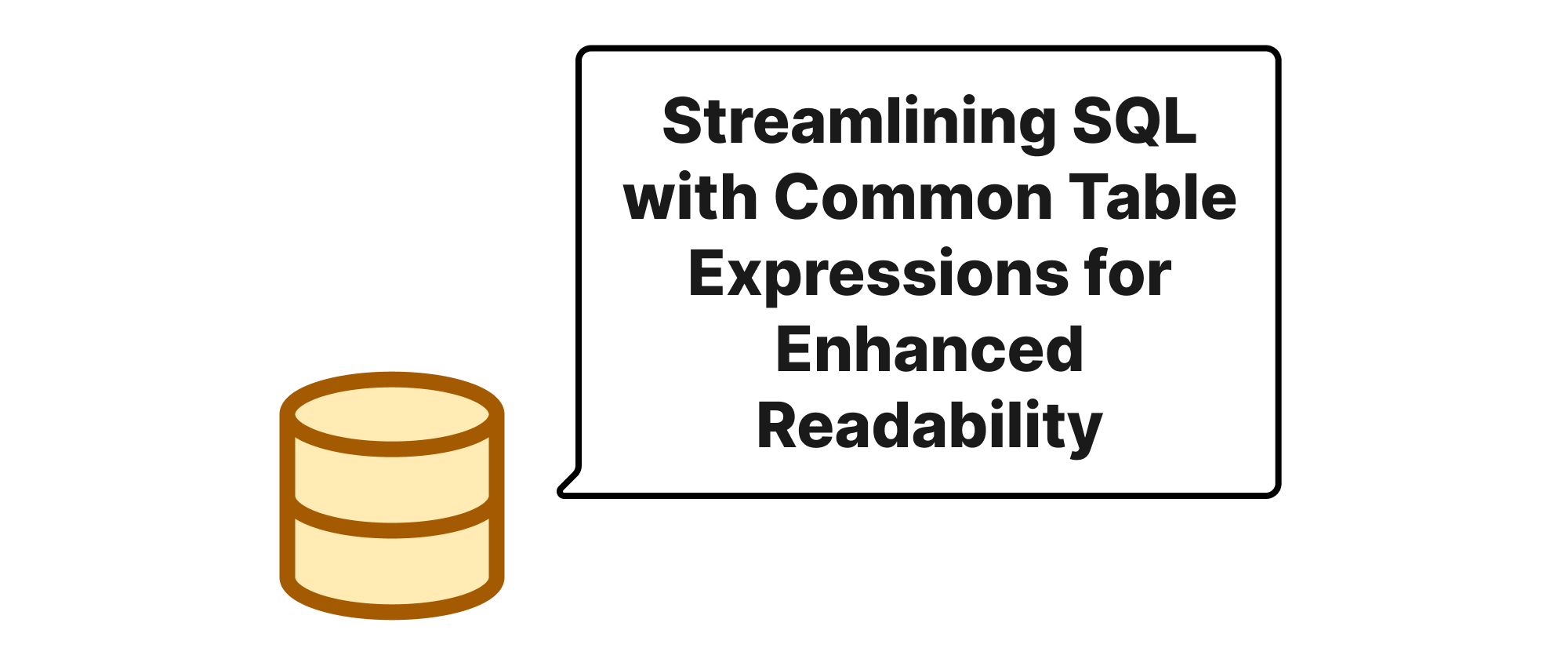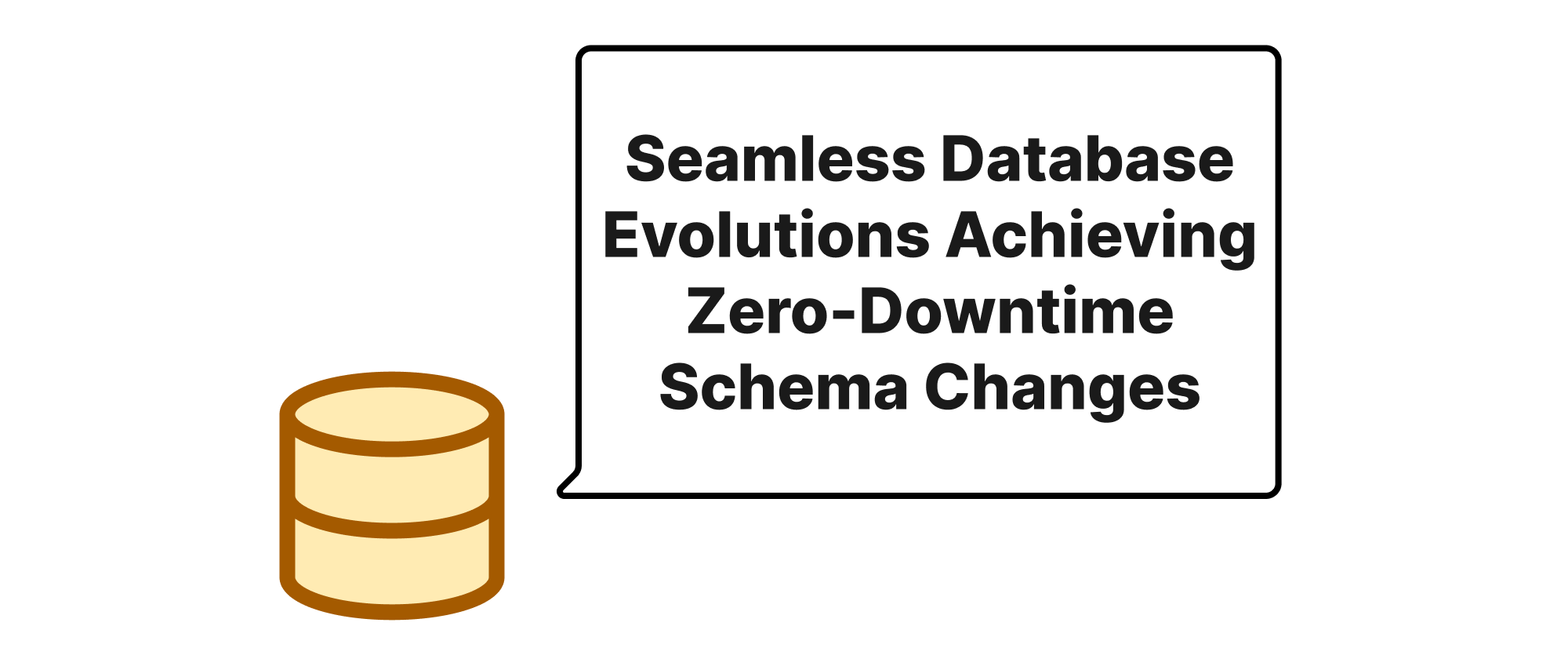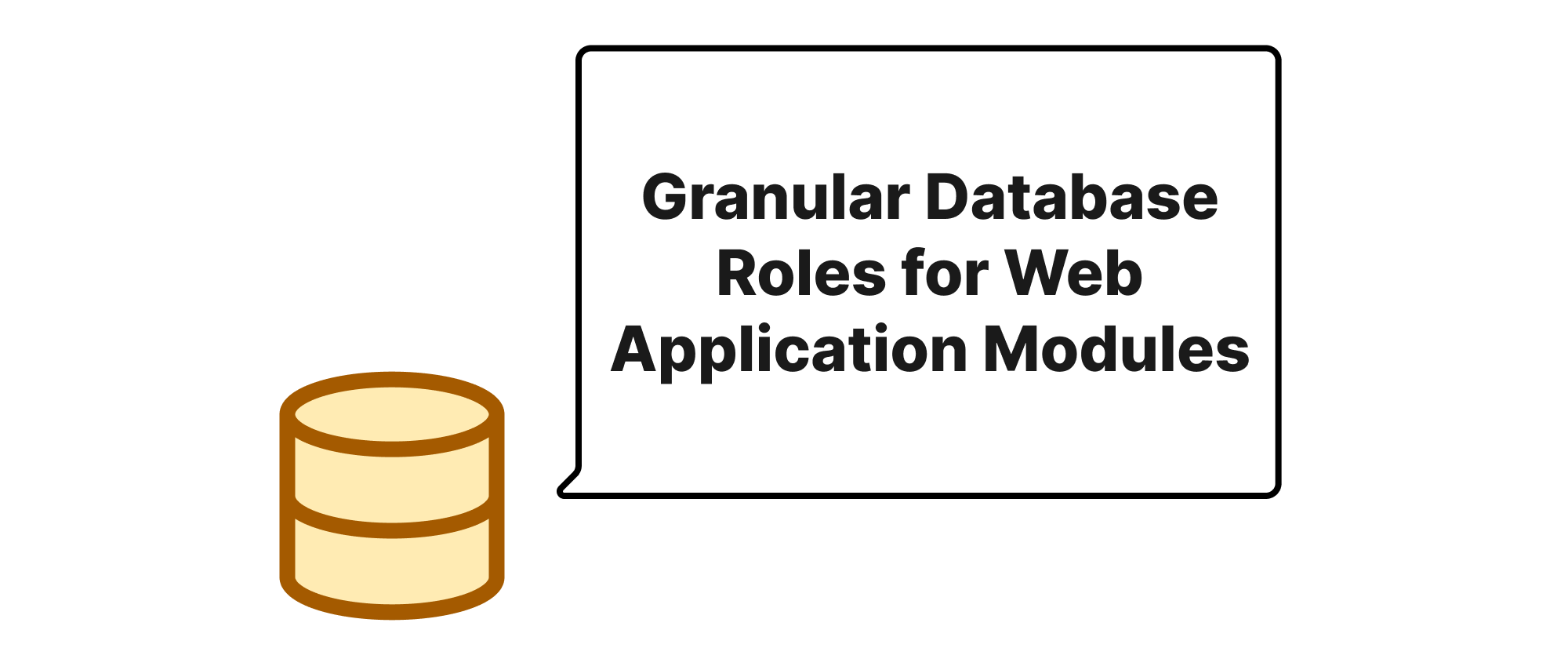Streamlining SQL with Common Table Expressions for Enhanced Readability
Min-jun Kim
Dev Intern · Leapcell

Introduction
In the intricate world of database management, SQL queries are the lifeblood that extracts, manipulates, and transforms data. As data volumes grow and business logic becomes more sophisticated, queries often evolve into sprawling, multi-layered constructs that can be daunting to write, debug, and ultimately understand. This complexity not only hinders development speed but also increases the likelihood of errors and makes collaboration a considerable challenge. Fortunately, SQL offers a powerful feature, Common Table Expressions (CTEs), which provides an elegant solution to this very problem. By breaking down complex logic into digestible, named sub-queries, CTEs transform opaque SQL into clear, maintainable code, significantly boosting productivity and readability. This article will explore how CTEs can be your best ally in taming the beasts of intricate SQL queries.
Understanding Common Table Expressions
Before diving into practical applications, let's establish a clear understanding of what CTEs are and their fundamental principles.
What are Common Table Expressions (CTEs)?
A Common Table Expression (CTE) is a temporary, named result set that you can reference within a single SQL statement (SELECT, INSERT, UPDATE, DELETE, or CREATE VIEW). Think of it as a defined subquery that "lives" only for the duration of the query it's part of. This temporary nature means CTEs are not stored as schema objects but are primarily used for organizing complex query logic.
Key Characteristics of CTEs:
- Temporary and Named: Each CTE is given a unique name, much like a temporary view, but it only exists for the scope of the immediate query.
- Non-Recursive and Recursive: CTEs can be either non-recursive (the focus of this article, used for sequential processing) or recursive (used for traversing hierarchical data like organizational charts or bill of materials).
- Improved Readability: By abstracting complex logic into smaller, named blocks, CTEs make queries much easier to read and comprehend.
- Reusability within a Single Query: Once defined, a CTE can be referenced multiple times within the same parent query, preventing code duplication.
- Enhanced Maintainability: Simplified structure makes it easier to modify or debug specific parts of a complex query without affecting others.
Syntax of a CTE:
The basic syntax for defining one or more CTEs is as follows:
WITH CTE_Name_1 AS ( -- Your first subquery definition SELECT column_a, column_b FROM table_x WHERE condition_1 ), CTE_Name_2 AS ( -- Your second subquery definition (can reference CTE_Name_1) SELECT column_c, column_d FROM CTE_Name_1 WHERE condition_2 ) -- The final query that uses one or more CTEs SELECT * FROM CTE_Name_2 WHERE final_condition;
Notice the WITH keyword, followed by the CTE name, AS, and then the subquery in parentheses. Multiple CTEs are separated by commas.
Why Use CTEs? Practical Applications and Examples
Let's illustrate the power of CTEs with practical examples, addressing common complex query scenarios.
Example 1: Breaking Down Complex Joins
Consider a scenario where you need to find the average order value for customers who placed more than two orders and live in a specific region. Without CTEs, this might involve nested subqueries or deeply chained joins.
Without CTEs:
SELECT c.Region, AVG(o.OrderValue) AS AverageOrderValue FROM Customers c JOIN Orders o ON c.CustomerID = o.CustomerID WHERE c.CustomerID IN ( SELECT CustomerID FROM Orders GROUP BY CustomerID HAVING COUNT(OrderID) > 2 ) AND c.Region = 'North' GROUP BY c.Region;
This query is functional but can be hard to follow due to the inline subquery.
With CTEs:
WITH CustomersWithMultipleOrders AS ( SELECT CustomerID FROM Orders GROUP BY CustomerID HAVING COUNT(OrderID) > 2 ), CustomersInNorthRegion AS ( SELECT CustomerID, Region FROM Customers WHERE Region = 'North' ) SELECT cnr.Region, AVG(o.OrderValue) AS AverageOrderValue FROM Orders o JOIN CustomersInNorthRegion cnr ON o.CustomerID = cnr.CustomerID JOIN CustomersWithMultipleOrders cmos ON o.CustomerID = cmos.CustomerID GROUP BY cnr.Region;
Here, we've clearly separated the logic into CustomersWithMultipleOrders and CustomersInNorthRegion. Each step is self-explanatory, making the overall query far more readable and easier to debug if issues arise.
Example 2: Simplifying Multi-Step Data Transformations
Imagine you need to calculate the running total of sales for each product category over time.
Without CTEs (often involves window functions with nested subqueries if not carefully structured):
SELECT s.SaleDate, s.Category, s.SalesAmount, (SELECT SUM(s2.SalesAmount) FROM SalesData s2 WHERE s2.Category = s.Category AND s2.SaleDate <= s.SaleDate) AS RunningTotal FROM SalesData s ORDER BY s.Category, s.SaleDate;
This can be inefficient and hard to optimize for the database engine due to the correlated subquery.
With CTEs and Window Functions:
WITH DailyCategorySales AS ( SELECT SaleDate, Category, SUM(SalesAmount) AS DailySales FROM SalesData GROUP BY SaleDate, Category ) SELECT SaleDate, Category, DailySales, SUM(DailySales) OVER (PARTITION BY Category ORDER BY SaleDate) AS RunningTotalSales FROM DailyCategorySales ORDER BY Category, SaleDate;
In this example, the DailyCategorySales CTE first aggregates sales by date and category, providing a clean intermediate result. The final SELECT then applies the window function for running totals, building upon this clear foundation. This approach is not only more readable but often more performant as well.
Example 3: Improving Modularity and Debugging
Consider a report that calculates several metrics based on a filtered set of transactions. If the filtering logic is complex, repeating it for each metric can lead to errors and maintenance headaches.
Without CTEs (repetitive filtering):
SELECT (SELECT COUNT(TransactionID) FROM Transactions WHERE TransactionType = 'Purchase' AND Amount > 100 AND TransactionDate >= '2023-01-01') AS TotalPurchases, (SELECT SUM(Amount) FROM Transactions WHERE TransactionType = 'Purchase' AND Amount > 100 AND TransactionDate >= '2023-01-01') AS TotalPurchaseAmount, (SELECT AVG(Amount) FROM Transactions WHERE TransactionType = 'Purchase' AND Amount > 100 AND TransactionDate >= '2023-01-01') AS AveragePurchaseAmount;
With CTEs (centralized filtering):
WITH FilteredTransactions AS ( SELECT TransactionID, TransactionType, Amount FROM Transactions WHERE TransactionType = 'Purchase' AND Amount > 100 AND TransactionDate >= '2023-01-01' ) SELECT COUNT(TransactionID) AS TotalPurchases, SUM(Amount) AS TotalPurchaseAmount, AVG(Amount) AS AveragePurchaseAmount FROM FilteredTransactions;
Here, the FilteredTransactions CTE encapsulates the common filtering logic. If the filtering criteria change, you only need to modify it in one place within the CTE definition, dramatically simplifying maintenance and reducing the chance of inconsistencies. Moreover, you can SELECT * FROM FilteredTransactions; as an intermediate debugging step, which is incredibly useful.
When to Use CTEs
- When queries are complex and involve multiple steps: Break down the logic into logical, named chunks.
- When you need to reference a subquery multiple times within the same larger query: Avoid repetition and improve consistency.
- When using window functions: CTEs can clearly separate the data preparation step from the window function application.
- For recursive queries: Essential for hierarchical data traversal.
- To improve the readability and maintainability of your SQL code.
Limitations
- Scope: CTEs are temporary and only exist for the duration of the query they are defined in. They cannot be referenced by subsequent, independent queries.
- Performance: While CTEs improve readability, they don't inherently improve performance, and in some cases, poorly constructed CTEs might even lead to slightly less optimal query plans than carefully tuned subqueries (though modern optimizers are very good). Always analyze the execution plan if performance is critical.
- Indexing: Since CTEs are temporary result sets, indexes defined on base tables aren't directly used within the CTE itself unless the optimizer determines it can propagate predicates or push down operations.
Conclusion
Common Table Expressions are an indispensable tool for any SQL developer aiming to write cleaner, more understandable, and more maintainable code. By allowing you to modularize complex logic into named, temporary result sets, CTEs transform intricate, monolithic queries into a series of logical, digestible steps. This not only significantly enhances the readability of your SQL but also streamlines debugging, facilitates collaboration, and ultimately boosts productivity. Embrace CTEs to tame your complex SQL queries and bring clarity to your database interactions.


